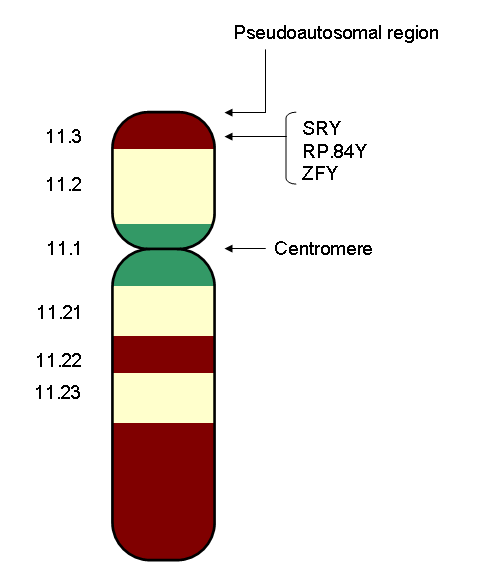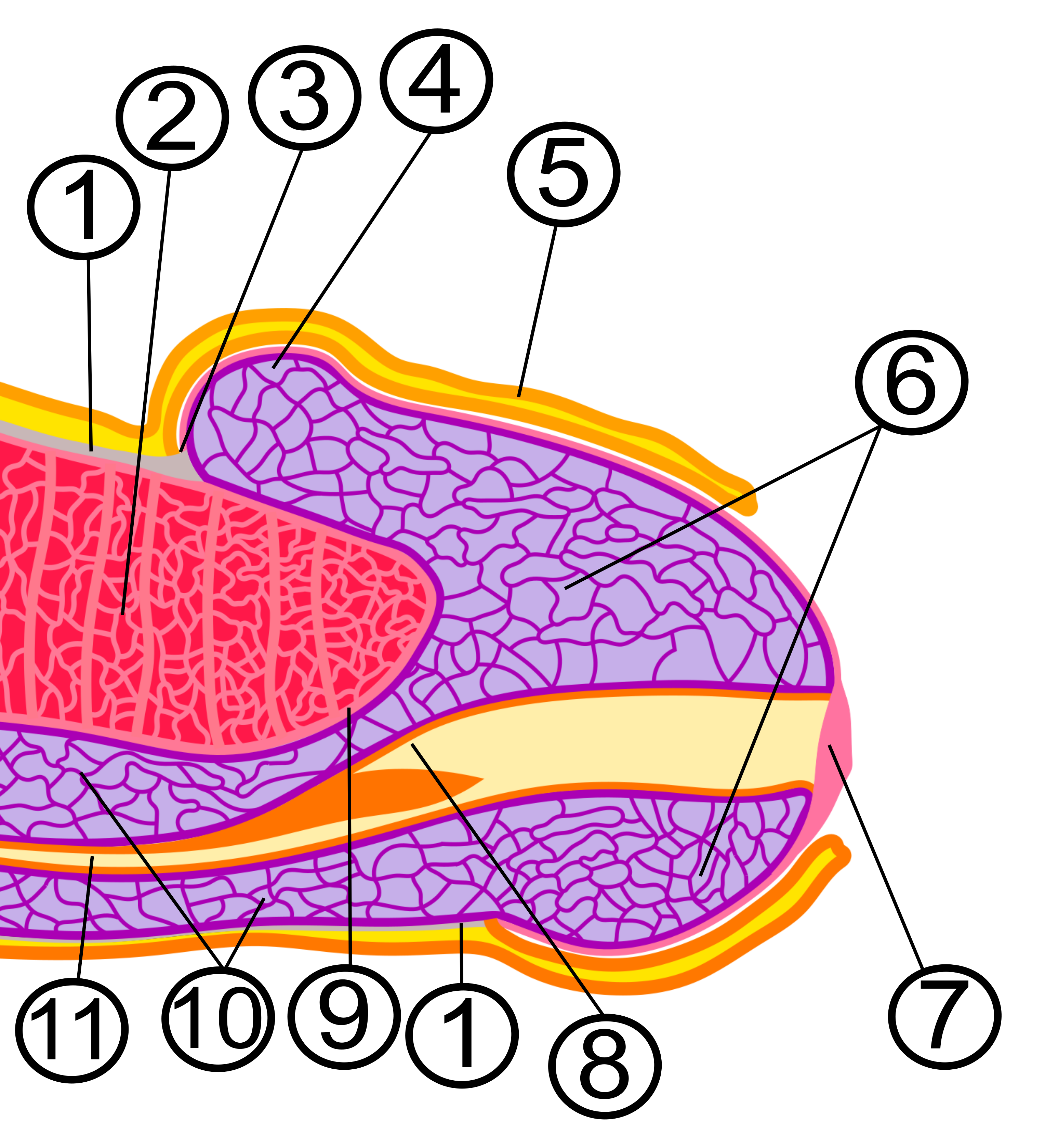|
Primordial Phallus
In embryology, the primordial phallus refers to the clitoris of a female or the penis in the male, particularly during embryonic development of the urinary and reproductive organs, before sexual differentiation is evident. This is also the case for the immature male analog, the immature glans penis. Image:Primordial_phallus,_low_mag.jpg, Micrograph of the primordial phallus, H&E stain. Image:Primordial_phallus,_intermed._mag.1.jpg, Micrograph of the primordial phallus, H&E stain. See also * Aphallia * Genital tubercle A genital tubercle, phallic tubercle, or clitorophallic structure is a body of tissue present in the development of the reproductive system of amniotes. It forms in the ventral, caudal region of mammalian embryos of both sexes, and eventually ... Embryology of urogenital system {{developmental-biology-stub ... [...More Info...] [...Related Items...] OR: [Wikipedia] [Google] [Baidu] |
Embryology
Embryology (from Ancient Greek, Greek ἔμβρυον, ''embryon'', "the unborn, embryo"; and -λογία, ''-logy, -logia'') is the branch of animal biology that studies the Prenatal development (biology), prenatal development of gametes (sex cells), fertilization, and development of embryos and fetuses. Additionally, embryology encompasses the study of congenital disorders that occur before birth, known as teratology. Early embryology was proposed by Marcello Malpighi, and known as preformationism, the theory that organisms develop from pre-existing miniature versions of themselves. Aristotle proposed the theory that is now accepted, Epigenesis (biology), epigenesis. Epigenesis (biology), Epigenesis is the idea that organisms develop from seed or egg in a sequence of steps. Modern embryology developed from the work of Karl Ernst von Baer, though accurate observations had been made in Italy by anatomists such as Aldrovandi and Leonardo da Vinci in the Renaissance. Comparative ... [...More Info...] [...Related Items...] OR: [Wikipedia] [Google] [Baidu] |
Clitoris
In amniotes, the clitoris ( or ; : clitorises or clitorides) is a female sex organ. In humans, it is the vulva's most erogenous zone, erogenous area and generally the primary anatomical source of female Human sexuality, sexual pleasure. The clitoris is a complex structure, and its size and sensitivity can vary. The visible portion, the glans, of the clitoris is typically roughly the size and shape of a pea and is estimated to have at least 8,000 Nerve, nerve endings. * * Peters, B; Uloko, M; Isabey, PHow many Nerve Fibers Innervate the Human Clitoris? A Histomorphometric Evaluation of the Dorsal Nerve of the Clitoris 2 p.m. ET 27 October 2022, 23rd annual joint scientific meeting of Sexual Medicine Society of North America and International Society for Sexual Medicine Sexology, Sexological, medical, and psychological debate has focused on the clitoris, and it has been subject to social constructionist analyses and studies. Such discussions range from anatomical accuracy, g ... [...More Info...] [...Related Items...] OR: [Wikipedia] [Google] [Baidu] |
Penis
A penis (; : penises or penes) is a sex organ through which male and hermaphrodite animals expel semen during copulation (zoology), copulation, and through which male placental mammals and marsupials also Urination, urinate. The term ''penis'' applies to many intromittent organs of vertebrates and invertebrates, but not to all. As an example, the intromittent organ of most Cephalopoda is the hectocotylus, a specialized arm, and male spiders use their pedipalps. Even within the Vertebrata, there are morphological variants with specific terminology, such as Hemipenis, hemipenes. Etymology The word "penis" is taken from the Latin word for "Latin profanity#Synonyms and metaphors, tail". Some derive that from Proto-Indo-European language, Indo-European ''*pesnis'', and the Greek word πέος = "penis" from Indo-European ''*pesos''. Prior to the adoption of the Latin word in English, the penis was referred to as a "yard". The Oxford English Dictionary cites an example of the w ... [...More Info...] [...Related Items...] OR: [Wikipedia] [Google] [Baidu] |
Development Of The Urinary And Reproductive Organs
The development of the urinary system begins during prenatal development, and relates to the development of the urogenital system – both the organs of the urinary system and the sex organs of the reproductive system. The development continues as a part of sexual differentiation. The urinary and reproductive organs are developed from the intermediate mesoderm. The permanent organs of the adult are preceded by a set of structures which are purely embryonic, and which with the exception of the ducts disappear almost entirely before birth. These embryonic structures are on either side; the pronephros, the mesonephros and the metanephros of the kidney, and the Wolffian duct, Wolffian and Müllerian ducts of the sex organ. The pronephros disappears very early; the structural elements of the mesonephros mostly degenerate, but the gonad is developed in their place, with which the Wolffian duct remains as the duct in males, and the Müllerian as that of the female. Some of the tubules of ... [...More Info...] [...Related Items...] OR: [Wikipedia] [Google] [Baidu] |
Sexual Differentiation
Sexual differentiation is the process of development of the sex differences between males and females from an undifferentiated zygote. Sex differentiation is usually distinct from sex determination; sex determination is the designation of the development stage towards either male or female, while sex differentiation is the pathway towards the development of the phenotype. In many species, testicular or ovarian differentiation begins with the appearance of Sertoli cells in males and granulosa cells in females. As embryos develop into mature adults, sex differences develop at many levels, including chromosomes, gonads, hormones, and anatomy. Beginning with determining sex by genetic and/or environmental factors, humans and other organisms proceed towards different differentiation pathways as they grow and develop. Sex determination systems Humans, many mammals, and some insects and other animals have an XY sex-determination system. Humans have 46 chromosomes, including two sex ... [...More Info...] [...Related Items...] OR: [Wikipedia] [Google] [Baidu] |
Glans Penis
In male human anatomy, the glans penis or penile glans, commonly referred to as the glans, (; from Latin ''glans'' meaning "acorn") is the bulbous structure at the Anatomical terms of location#Proximal and distal, distal end of the human penis that is the human male's most sensitive erogenous zone and primary anatomical source of Human sexuality, sexual pleasure. The glans penis is present in the male reproductive system, reproductive organs of humans and most other mammals where it may appear smooth, spiny, elongated or divided. It is externally lined with Mucosa, mucosal tissue, which creates a smooth texture and glossy appearance. In humans, the glans is located over the distal ends of the Corpus cavernosum penis, corpora cavernosa and is a continuation of the Corpus spongiosum (penis), corpus spongiosum of the penis. At the summit appears the urinary meatus and at the base forms the Corona of glans penis, corona glandis. An elastic band of tissue, known as the Penile frenulum ... [...More Info...] [...Related Items...] OR: [Wikipedia] [Google] [Baidu] |
H&E Stain
Hematoxylin and eosin stain ( or haematoxylin and eosin stain or hematoxylin–eosin stain; often abbreviated as H&E stain or HE stain) is one of the principal tissue stains used in histology. It is the most widely used stain in medical diagnosis and is often the ''gold standard.'' For example, when a pathologist looks at a biopsy of a suspected cancer, the histological section is likely to be stained with H&E. H&E is the combination of two histological stains: hematoxylin and eosin. The hematoxylin stains cell nuclei a purplish blue, and eosin stains the extracellular matrix and cytoplasm pink, with other structures taking on different shades, hues, and combinations of these colors. Hence a pathologist can easily differentiate between the nuclear and cytoplasmic parts of a cell, and additionally, the overall patterns of coloration from the stain show the general layout and distribution of cells and provides a general overview of a tissue sample's structure. Thus, patte ... [...More Info...] [...Related Items...] OR: [Wikipedia] [Google] [Baidu] |
Aphallia
Aphallia is a congenital malformation in which the phallus (penis or clitoris) is absent. It is also known as penile agenesis in the case of males. The word is derived . It is classified as a disorder of sex development. Causes Aphallia has no known cause. It is not linked to deficient hormone amounts or action, but rather to a failure of the fetal genital tubercle to form between 3 and 6 weeks after conception. The urethra of an affected child opens on the perineum. Diagnosis Aphallia is usually diagnosed at birth by observation of the genital area, which is usually ambiguous. Treatment Congenital anomalies like cryptorchidism, renal agenesis/dysplasia, musculoskeletal and cardiopulmonary anomalies are also common (>50% cases), hence evaluation of the patient for internal anomalies is mandatory. Although aphallia can occur in any body type, it is considered a substantially more troublesome problem with those who have testes present, and has in the past sometimes been considere ... [...More Info...] [...Related Items...] OR: [Wikipedia] [Google] [Baidu] |
Genital Tubercle
A genital tubercle, phallic tubercle, or clitorophallic structure is a body of tissue present in the development of the reproductive system of amniotes. It forms in the ventral, caudal region of mammalian embryos of both sexes, and eventually develops into a primordial phallus. In the human fetus, the genital tubercle develops around week four of gestation, and by week nine, becomes recognizably either a clitoris or penis. This should not be confused with the sinus tubercle which is a proliferation of endoderm induced by paramesonephric ducts. Even after the phallus is developed (either a penile shaft or clitoral shaft), the term genital tubercle remains, but only as the terminal end of it, which develops into either the glans penis or the glans clitoridis. In the development of the male fetus, the two sides of the tubercle approach ventrally forming a hollow tube that encloses the male urethra. The two glans wings merge in the midline forming the septum glandis. In the ... [...More Info...] [...Related Items...] OR: [Wikipedia] [Google] [Baidu] |





